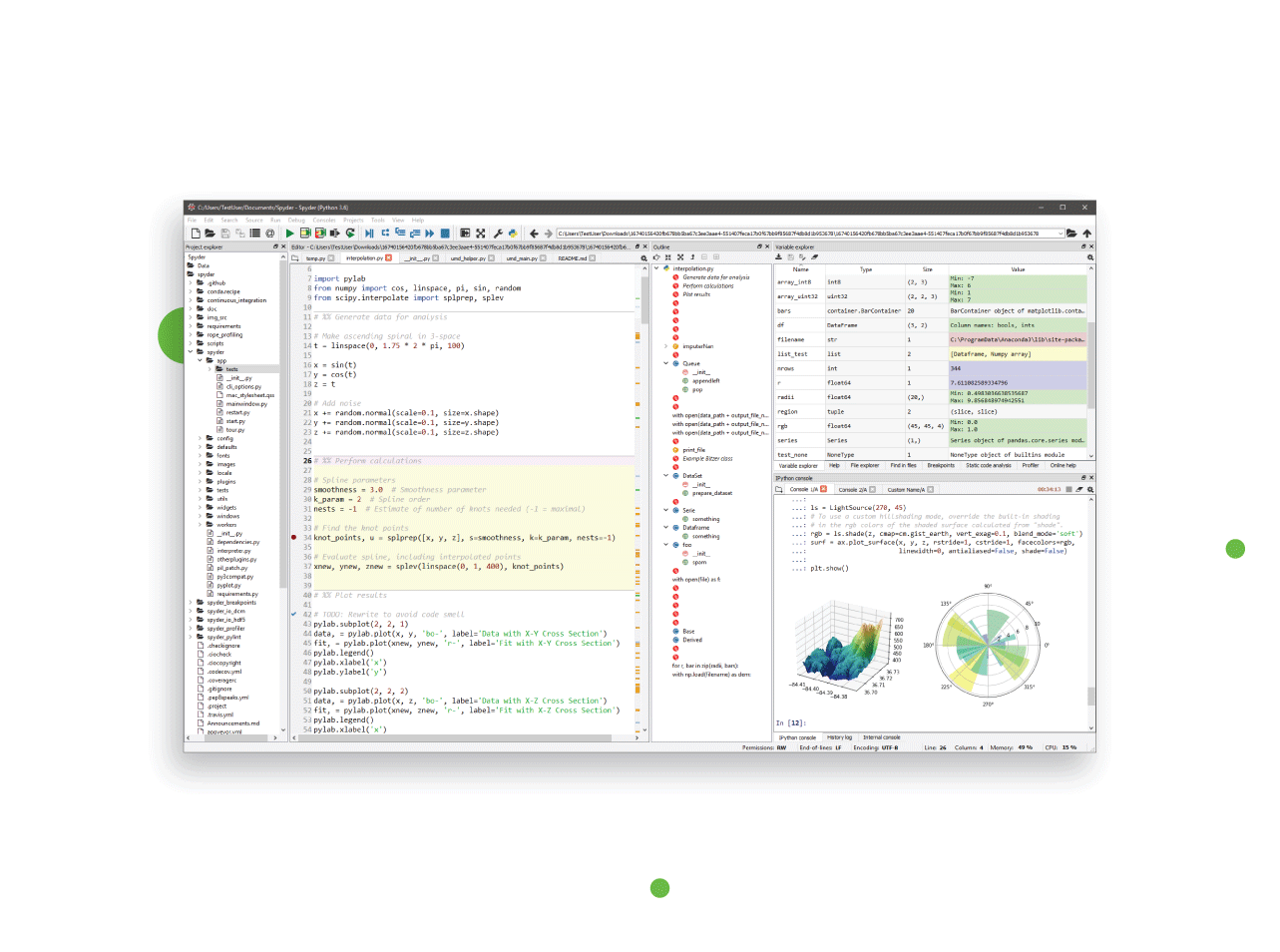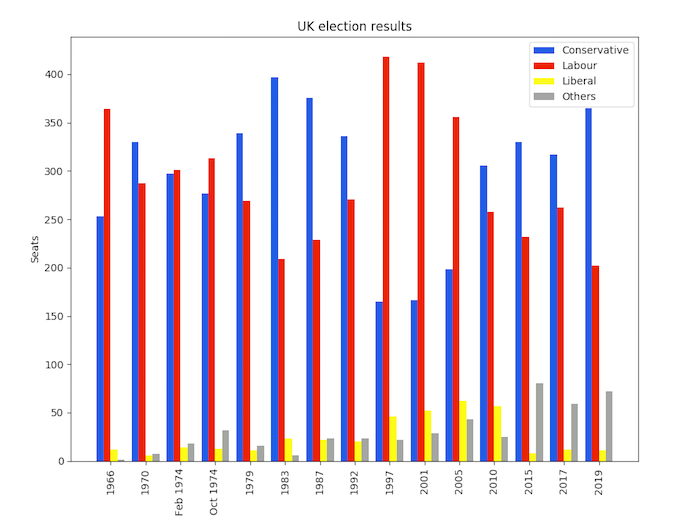Matplotlib For Mac
Matplotlib for C This is the documentation to Matplotlib for C, a C wrapper for Python’s matplotlib (MPL) plotting library. The code is organised inthisGitHub repository, which is a fork ofthatrepository. Note: This is: A lightweight, easy-to-use interface to create stylish and clean plots in C using basic MPL com-mands. If you are using Python from Homebrew, or Macports, then you can use the standard pip installer to install Matplotlib binaries in the form of wheels. Pip is installed by default with python.org and Homebrew Python, but needs to be manually installed on Macports with sudo port install py38-pip.
- Matplotlib Tutorial
- Matplotlib Useful Resources
- Selected Reading
Matplotlib is one of the most popular Python packages used for data visualization. It is a cross-platform library for making 2D plots from data in arrays. It provides an object-oriented API that helps in embedding plots in applications using Python GUI toolkits such as PyQt, WxPythonotTkinter. It can be used in Python and IPython shells, Jupyter notebook and web application servers also.
This tutorial is designed for those learners who wish to acquire knowledge on the basics of data visualization.
Matplotlib is written in Python and makes use of NumPy, the numerical mathematics extension of Python. We assume that the readers of this tutorial have basic knowledge of Python.
I. What is MatplotLib and BaseMaps
Matplotlib and BaseMaps are python libraries used to display and manipulate data. MatplotLib is the basic package which allows the programmer to create graphs and plots in 2D and 3D (includining animation). The BaseMaps extension adds the additional capabilities to display data overlayed onto a 2D map or 3D globe. The combination of the two allows anyone with familiarity with python a quick and easy way to create analysis tools oor even just some quick visualizations.
II. Easiest Install
The easiest way to install both MatPlotLib and BaseMaps is to use DarwinPorts (http://darwinports.com/) or Fink(http://www.finkproject.org/).These applications are 'package managers' that will allow you to be able to download all sorts of free software packages for the Mac. You can install either or both applications (the available packages overlap quite a bit).

For Fink, you can install matplotlib and basemaps by running:

For DarwinPorts you can install by using this command:
In either case, this should install everything needed in order to use the python libraries. To test it, use the example presented below in this document.
This is by far the simplest method of installation. Manual installation isn't difficult but certainly takes a little longer.
III. Installing MatplotLib
If you want to do this a little more hands on, it's not much more difficult. First, you'll need to download four dmg files:
- Python 2.7.3:
- http://www.python.org/ftp/python/2.7.3/python-2.7.3-macosx10.3.dmg
- Numpy:
- http://sourceforge.net/projects/numpy/files/NumPy/1.6.2/numpy-1.6.2-py2.7-python .org-macosx10.3.dmg/download
- SciPy:
- http://sourceforge.net/projects/scipy/files/scipy/0.11.0/scipy-0.11.0-py2.7-pyth on.org-macosx10.3.dmg/download
- Matplotlib:
Install Python first. Then install Numpy and SciPy. Lastly, install Matplotlib. These are all dmg’s so they should automatically install everything. The installation will be done in the directory:

You will then need to set up your environment variables (.cshrc file for instance):
Once everything is installed, create a new python script, cut and paste one of their examples into it, then try to run it. Here is the one I used:
from mpl_toolkits.mplot3d import Axes3D
import matplotlib.pyplot as plt
import numpy as np
fig = plt.figure()
ax = Axes3D(fig)
for c, z in zip(['r', 'g', 'b', 'y'], [30, 20, 10, 0]):
xs = np.arange(20)
ys = np.random.rand(20)
ax.bar(xs, ys, zs=z, zdir='y', color=c, alpha=0.8)
ax.set_xlabel('X')
ax.set_ylabel('Y')
ax.set_zlabel('Z')
plt.show()
This should display a 3D bar graph using transparency and multiple colors.
Python Install Matplotlib Pip
IV. Installing BaseMaps From Source
This gets a little trickier. There is no pre-built dmg file for installation, so this has to be downloaded and built.
Matplotlib Tutorial For Machine Learning
First, get the source from here: http://sourceforge.net/projects/matplotlib/files/matplotlib-toolkits/basemap-0.9 9.4/basemap-0.99.4.tar.gz/download
The size is about 100MB, but almost all of that is taken up by map data. Extract the source, then open a temrinal and navigate to the directory.
Before BaseMaps can be built, the GEOS library (nothing to do with the GEOS model) needs to be built. To do so, navigate to the GEOS directory and run configure like so: ./configure --prefix=some/path. After that, you run make and make install. This will create the GEOS libraries.
When the libraries are created, you will need to create a GEOS_DIR environment variable. The GEOS_DIR environemnt variable should match whatever path you used for the prefix when you ran configure. After the environment variable has been created, do a source or whatever action is required to make sure the variable is there.
Now you can go back to the root BaseMap directory and install BaseMaps. To do so, use the command: python setup.py install. This will finish the build process and install the necessary files and libraries to use BaseMaps. To test the installation, you can navigate to the exampless directory and run a few of them.
V. Installing BaseMaps From Binary Distribution
The setup.py script in BaseMaps gives an option to create a binary distribution. While this is not a self-installing dmg file, it creates a tarball with all the correct folder heirarchy and files for distribution. If you have a binary distribution, installation is easy. Extract the archive and then use cp -R to copy the folder to the root directory.
VI. Installing Python Image Library (PIL)
This is an optional package but may be necessary depending on whether or not you use certain image sources (see the bluemarble example in BaseMaps).
Again, no binary distribution is available for the Mac so you'll need to build from source. Worse, the actual build fails on the Mac (but it can be worked around).
You can get the source here: http://effbot.org/downloads/Imaging-1.1.7.tar.gz
Extract the source. In a terminal window, navigate to the image library directory. Run python setup.py install. This will most likely fail. The failure arises from the script, which tries to build libraries for both PPC and Intel based machines. Unless you've explicitly installed PPC versions of the required libraries, the python script will fail.
The workaround is simple. There is only one file that this fails on. Copy the failed buid lines beginning with gcc, then paste them on the commandline. After that, go back and delete the -arch ppc part off the command. Once the file builds, re-run the the setup.py script. This should successfully build and instal the library.
To ensure that it installed correctly, you can go to the BaseMaps example directory and try running the bluemarble or warpimage examples.
Matplotlib Download
